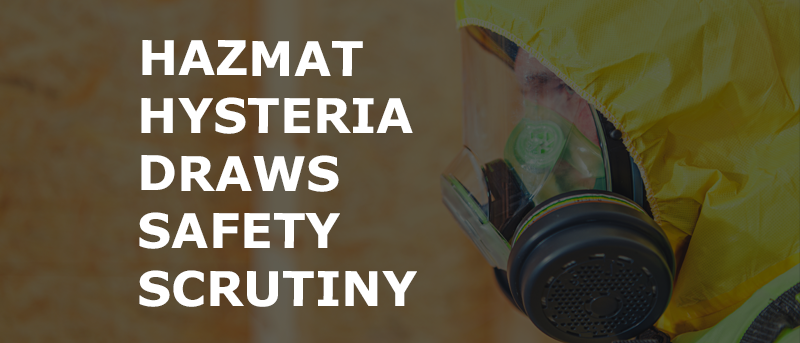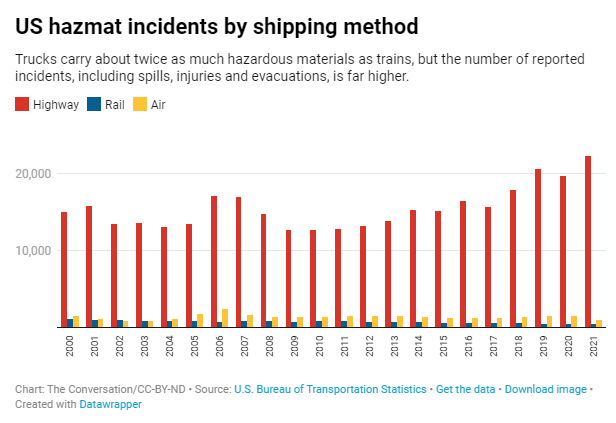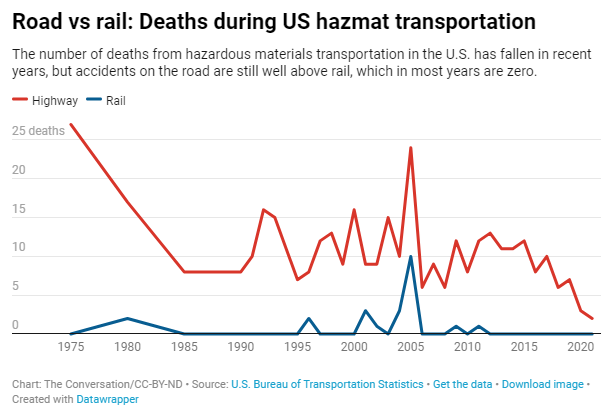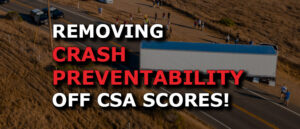Furry Friends Cause Trucking Border Delays At Canadian Border
To prevent reintroduction of rabies carried by dogs into the United States, new CDC regulations require proof of healthy pets at border crossing. Truckers who
We are a team of DOT Compliance and Licensing Professionals helping trucking and transportation companies remain safe, compliant, and profitable.
CNS or Compliance Navigation Specialists is DOT Compliance company that assists trucking and transportation companies remain DOT Compliant. We are part of a network of companies, CNS Companies, specializing in services related to the transportation, manufacturing, construction, service, education and medical industries.

A full-scale DOT Compliance Program managing a long haul carrier’s safety, compliance, licensing and more.
Learn more >>>
A DOT Compliance Program that keeps motor carriers compliant with the 6 Basic DOT Regulations required of all carriers.
Learn more >>>
Our Short-Haul/Construction Program is a full-scale program designed for private carriers that do not haul for-hire.
Learn more >>>
Our most comprehensive DOT Compliance Program, operating as your company’s off-site Safety Director or assisting your current safety personnel.
Learn more >>>
Our Non-CDL Program is a full-scale program managing safety, compliance, licensing and more for moving companies, couriers, landscapers, or any company subject to DOT regulations and does not employ CDL drivers.
Learn more >>>
Our DOT Audit Services cover a number of different types of DOT Audits that new and existing carriers will be subject to.
Our DOT Driver Services help trucking companies and carriers to stay compliant as they grow and hire more drivers.
Our DOT Vehicle Services focus on ensuring your vehicles are compliant with DOT Regulations, which is just as important as your drivers.
Our DOT Services for Special Carriers focus on companies outside of the typical motor carrier, like HAZMAT, Passenger and Bus Carriers.
CNS is part of a group of companies that offer other necessary services for the trucking and transportation industry, such as Commercial Trucking Insurance, CDL Training, Online Training Course, and even Healthcare.
Our DOT Licensing Services will cover you whether you are an existing company or just starting a trucking company. Our DOT Licensing Specialists can help you get up and running and in days with your DOT number, MC Authority, EIN, UCR, IFTA, 2290 HVUT, Fuel Taxes and can even set you up to get your Commercial Driver's License (CDL) with CNS Driver Training Center.
Our DOT Licensing Specialists will help you with every aspect of starting a trucking company. All you need to do is choose a name for your trucking company.
You will need to ensure your DOT Number, MC Authority, Vehicle Registration, etc. is all set up properly when you start your trucking business.
Our Licensing Specialists can help with all aspects of filing and renewing licenses, fuel taxes, etc.
CNS is part of a group of companies that offer other necessary services for the trucking and transportation industry, such as Commercial Trucking Insurance, CDL Training, Online Training Course, and even Healthcare.
To prevent reintroduction of rabies carried by dogs into the United States, new CDC regulations require proof of healthy pets at border crossing. Truckers who
CNS or Compliance Navigation Specialists is DOT Compliance company that assists trucking and transportation companies remain DOT Compliant. We are part of a network of companies, CNS Companies, specializing in services related to the transportation, manufacturing, construction, service, education and medical industries.
CNS Companies is a network of companies specializing in services related to the transportation, manufacturing, construction, service, education and medical industries. Our DOT Compliance division is handled by Compliance Navigation Specialists, CNS Insurance handles Commercial Truck Insurance, CDL training is managed by the CNS Driver Training Center and healthcare is managed by CNS Occupational Medicine.
We are a team of DOT Compliance and Licensing Professionals helping trucking and transportation companies remain safe, compliant, and profitable.
CNS or Compliance Navigation Specialists is DOT Compliance company that assists trucking and transportation companies remain DOT Compliant. We are part of a network of companies, CNS Companies, specializing in services related to the transportation, manufacturing, construction, service, education and medical industries.

A full-scale DOT Compliance Program managing a long haul carrier’s safety, compliance, licensing and more.
Learn more >>>
A DOT Compliance Program that keeps motor carriers compliant with the 6 Basic DOT Regulations required of all carriers.
Learn more >>>
Our Short-Haul/Construction Program is a full-scale program designed for private carriers that do not haul for-hire.
Learn more >>>
Our most comprehensive DOT Compliance Program, operating as your company’s off-site Safety Director or assisting your current safety personnel.
Learn more >>>
Our Non-CDL Program is a full-scale program managing safety, compliance, licensing and more for moving companies, couriers, landscapers, or any company subject to DOT regulations and does not employ CDL drivers.
Learn more >>>
Our DOT Audit Services cover a number of different types of DOT Audits that new and existing carriers will be subject to.
Our DOT Driver Services help trucking companies and carriers to stay compliant as they grow and hire more drivers.
Our DOT Vehicle Services focus on ensuring your vehicles are compliant with DOT Regulations, which is just as important as your drivers.
Our DOT Services for Special Carriers focus on companies outside of the typical motor carrier, like HAZMAT, Passenger and Bus Carriers.
CNS is part of a group of companies that offer other necessary services for the trucking and transportation industry, such as Commercial Trucking Insurance, CDL Training, Online Training Course, and even Healthcare.
Our DOT Licensing Services will cover you whether you are an existing company or just starting a trucking company. Our DOT Licensing Specialists can help you get up and running and in days with your DOT number, MC Authority, EIN, UCR, IFTA, 2290 HVUT, Fuel Taxes and can even set you up to get your Commercial Driver's License (CDL) with CNS Driver Training Center.
Our DOT Licensing Specialists will help you with every aspect of starting a trucking company. All you need to do is choose a name for your trucking company.
You will need to ensure your DOT Number, MC Authority, Vehicle Registration, etc. is all set up properly when you start your trucking business.
Our Licensing Specialists can help with all aspects of filing and renewing licenses, fuel taxes, etc.
CNS is part of a group of companies that offer other necessary services for the trucking and transportation industry, such as Commercial Trucking Insurance, CDL Training, Online Training Course, and even Healthcare.
To prevent reintroduction of rabies carried by dogs into the United States, new CDC regulations require proof of healthy pets at border crossing. Truckers who
CNS or Compliance Navigation Specialists is DOT Compliance company that assists trucking and transportation companies remain DOT Compliant. We are part of a network of companies, CNS Companies, specializing in services related to the transportation, manufacturing, construction, service, education and medical industries.
CNS Companies is a network of companies specializing in services related to the transportation, manufacturing, construction, service, education and medical industries. Our DOT Compliance division is handled by Compliance Navigation Specialists, CNS Insurance handles Commercial Truck Insurance, CDL training is managed by the CNS Driver Training Center and healthcare is managed by CNS Occupational Medicine.

Non-Compliance of HAZMAT transportation rules can be the imminent death for a company, as the severity of fines and penalties can be up to $186,000 for civil violations and up to $500,000 for criminal violations.
There is no doubt about it, the Norfolk Southern HAZMAT freight train derailment on Feb. 3 in East Palestine, Ohio is a disaster.
While the derailment seems to have started with a maintenance issue where one of the trains cars wheel bearings overheated and started a fire, the regulations are also under heavy scrutiny.
With national media focused on figuring out who to blame, it is obvious that the government will look at all aspects of HAZMAT safety, no matter if chemicals are transported by air, rail, truck, or sea.
So, what can the trucking industry expect to happen in the weeks and months to come?
In the same month, a truck carrying nitric acid crashed on I-10 outside Tucson, Arizona killed the driver and released toxic chemicals into the air, forcing an evacuation in surrounding neighborhoods.
With HAZMAT scrutiny in the air, data is spreading about how federal data shows that trucking has had more HAZMAT incidents, deaths and damage when moving hazardous materials in the U.S.
Today, DOT Bureau of Transportation Statistics’ data show trucks carry twice the number of hazardous materials shipped in the U.S. when compared to trains in ton-miles.

While trucking accidents involving hazardous materials are less dramatic than 50 car train derailments, data shows there are thousands more of them every year and over 16 times more fatalities in the last 50 years, especially in the last decade, when HAZMAT rail incidents caused zero fatalities while trucking was responsible for 83.
The issue is that most rail events take place in remote areas, limiting their human impact, while trucks travel on highways with other drivers around and often in busy urban areas.

With the Ohio train derailment making national news, lawmakers and the DOT will push regulations and investigations for all modes of transportation, including trucking.
According to the PBS article, “activists are calling for more expensive investments, including requirements for heat sensors on train bearings, which appeared to have been involved in the Ohio derailment, and the restoration of a rule requiring advanced braking systems for trains carrying hazardous materials.”
DOT Secretary Pete Buttigieg is also looking into higher fines and encouraging rail companies to phase-in more puncture-resistant tank cars.
These regulations would raise the cost of rail shipping and could wind up putting more hazardous materials shipments on U.S. roads.
So, expect the same discussions around the trucking industry.
[Related: Surprise CVSA HAZMAT Road Blitz Found 14% Violations in June 2021]
There are many requirements among states and authorities to keep track of when it comes to hauling hazardous material.
Non-Compliance can be the imminent death for a company, as the severity of fines and penalties can be up to $186,000 for civil violations and up to $500,000 for criminal violations.
Any carrier that transports hazardous materials and falls into one of the 9 hazardous materials classes will be subject to these federal regulations.
[Related: CNS offers training, compliance training, certifications, and more]
For drivers, there are two rules that have been in place since 2003 and 2005 and were finalized by FMCSA and went into effect on November 1, 2019 concerning a mandatory background check for truck drivers interested in adding or renewing a HAZMAT endorsement on their CDL.
The background checks are mandatory and are administered by the Department of Homeland Security, with two exemptions, including state drivers with a valid transportation security card or Transportation Worker Identification Card (TWIC).
For carriers, if a HAZMAT involved incident occurs, there must be immediate notification by a carrier at the earliest practical moment when the hazardous material incident directly causes any of the following:
When it comes to HAZMAT carrier responsibilities, according to 49 CFR Parts 100-180 and Part 397, carriers are responsible for:
But wait, there is more.
Don’t forget about HAZMAT insurance coverage, which can be complicated and hard to find.
With news swirling around these derailments and accidents, a hazmat hauler must be prepared for any accident with pollution coverage.
There are three common solutions available for insuring hazmat hauler pollution exposures:
We cover all three of these in an in-depth article on our sister companies website. Check it out here.
With these coverages, you need a Risk Specialist to review your risk and make sure you have insurance without any coverage gaps at an affordable cost.
CNS Insurance specializes in Hazmat Risk. Our Commercial Trucking Insurance Specialists will review your insurance needs and recommend coverages that protect you and your company.
If you have any questions or concerns, please call us at 800.724.5523 or email info@cnsinsures.com.
At CNS, we are fully capable to handle your HAZMAT compliance training or other DOT training.
There are many rules, regulations, and requirements in each state for authorities to keep track of when it comes to hauling hazardous material. If you are not DOT compliant, it could be detrimental to your company, as fines and penalties can be upwards of $180,000.

To prevent reintroduction of rabies carried by dogs into the United States, new CDC regulations require proof of healthy pets at border crossing. Truckers who

This means future regulations will “become clearer” or “stuck in the courts” for years. On June 28, 2024, the U.S. Supreme Court overturned the Chevron

ATRI’s Research Advisory Committee (RAC) selected a diverse set of research priorities designed to address some of the industry’s most critical issues including workforce development,

CNS can help with our Roadside & Incident Report Management service where a team of DOT Compliance Specialists will assess the Department of Transportation safety records
Our DOT Compliance Programs ensure it is your top priority and keeps your business running.
Receive the latest transportation and trucking industry information about FMCSA and DOT Audits, Regulations, etc.

To prevent reintroduction of rabies carried by dogs into the United States, new CDC regulations require proof of healthy pets at border crossing. Truckers who

This means future regulations will “become clearer” or “stuck in the courts” for years. On June 28, 2024, the U.S. Supreme Court overturned the Chevron

ATRI’s Research Advisory Committee (RAC) selected a diverse set of research priorities designed to address some of the industry’s most critical issues including workforce development,
Join our monthly newsletter and stay up-to-date on trucking industry news and receive important compliance and licensing tips.
Join our monthly newsletter and stay up-to-date on trucking industry news and receive important compliance and licensing tips.